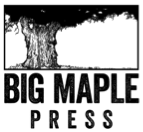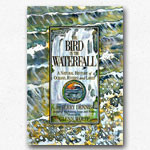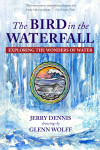Yes. But it’s a good kind of crazy.
Artist Glenn Wolff and I have made our livings illustrating and writing books for nearly 30 years. In that time we’ve witnessed the publishing industry go through the most dramatic changes since Guttenberg.
When we met in 1986, Glenn and I could not have anticipated how much the world was about to change. Glenn was drawing his illustrations on illustration boards and delivering them in person to art directors in their Manhattan offices; later, when he moved back home to Michigan, he sent them overnight via Fed-Ex.
I was writing my books by hand on legal pads, then typing the final drafts on a typewriter—initially on the manual Royal my parents gave me when I was in high school, then on an industrial-grade electric IBM that rattled so furiously that it walked across my desk as I typed. I made corrections with White-Out, and when the manuscript was finished made a Xerox copy, sealed the original in the carton that the Southworth 25% cotton typewriter paper had come in, and mailed it to my publisher.
By then Glenn was a regular illustrator for the New York Times and for magazines such as Audubon and Sports Afield, where my nature essays were also appearing. We liked each other, had some ideas for books, signed with an agent, and started publishing with New York houses. (You can read the story of our first meeting and the ensuing fun.)
Almost from the beginning we talked about someday starting a small press, an idea that grew with the years, especially after our early collaborations, It’s Raining Frogs and Fishes and The Bird in the Waterfall went out of print and we reacquired the rights to them. This summer we had the chance to team up with the wonderful Gail Dennis, a graphic designer with 30 years’ experience designing books and other publications and who is superbly organized and a master at implementing the ideas Glenn and I so casually sling around, and jumped at it. We named the press for the sugar maple in Gail’s and my front yard and Glenn designed a logo featuring its silhouette.
 Then we made a momentous decision: Big Maple Press would publish books to be sold only in independent stores.
Then we made a momentous decision: Big Maple Press would publish books to be sold only in independent stores.
Why? First, because we want to stay small. We’ve heard too many horror stories about start-ups driven into bankruptcy when big distributors and big chains ordered thousands of books then returned them. We’d rather work closely with a single distributor—Partners Distributing, in Holt, Michigan—and with a manageable number of independent stores that appreciate our books and might be inspired to recommend them to their publishers.
Second, because we hate bullies. In September I was one of 600 authors who signed a full-page letter in the New York Times protesting Amazon’s strong-arm business tactics. As a Macmillan author, I had watched the buy buttons on four of my books and every other Macmillan title disappear from Amazon’s website in 2010, when the publisher refused to buckle in to Amazon’s unreasonable price demands. Not longer after that, Amazon put a stranglehold on small literary publisher Melville House and nearly drove the house out of business. They used the same tactic this year against the large publishing group, Hachette. Jeff Bezos’ oft-quoted statement “that Amazon should approach small publishers the way a cheetah would pursue a sickly gazelle” sends shivers down our spines. Maybe publishing a book or two a year that the Bully can’t touch will be satisfying, like slinging pebbles at his forehead.
But there’s a third reason, and it’s the one that matters most. Glenn and I owe our careers to independent booksellers. It was they who championed our work starting with our first books, back when the big chains wouldn’t bother with us, and who support and encourage us still. It is only right at this stage of our careers that we should publish special editions that can be purchased only in independent stores.
We’re here—we’ve always been here—because we love books. We love writing, designing, and illustrating them. We love proofing them, opening the first carton of a new title, organizing them on our shelves, opening their covers and burying our noses in their pages, settling into our chairs on winter nights and losing ourselves in them. We’ve poured our hearts into all of our books and made them the best that we can. Now we have a chance to make them even better.
Is that crazy, or what?









7 Replies